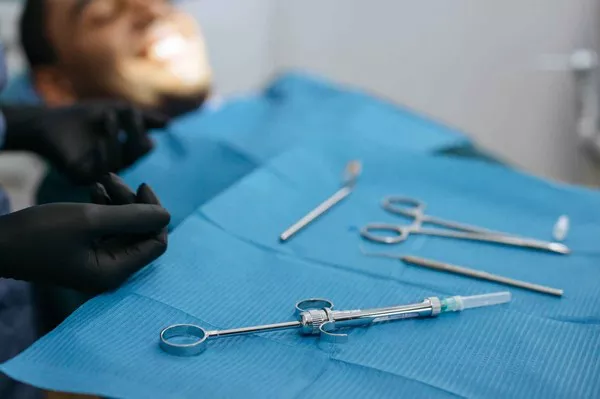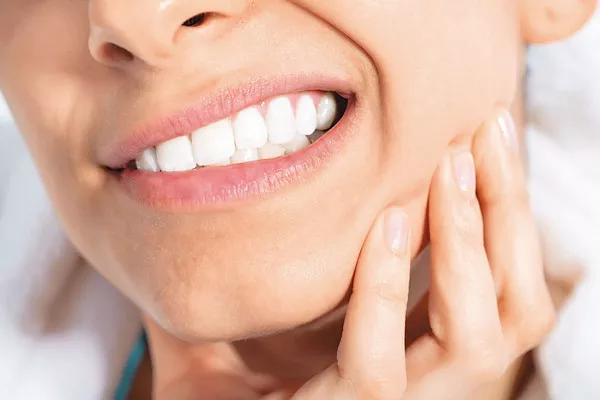Maintaining healthy gums and teeth is paramount for overall oral health. However, there are instances when individuals notice their gums overlapping their back teeth, a condition that can raise concerns and questions. This occurrence, known as gum overgrowth or gum hypertrophy, can be unsettling, but understanding its potential causes, implications, and available treatments can help individuals take proactive steps to address the issue. This article aims to delve into the phenomenon of gum overlapping the back tooth, shedding light on its underlying factors, potential consequences, and the recommended courses of action.
Understanding Gum Overgrowth
Gum overgrowth involves the excessive growth of gum tissue, leading to the gum partially or fully covering the surface of a tooth. This condition can affect both the front and back teeth, although it is often more noticeable in the back due to their location and lack of visibility. Gum overgrowth can be caused by various factors, ranging from genetics to underlying medical conditions.
Common Causes of Gum Overlapping Back Teeth
Several factors can contribute to gum overgrowth:
Poor Oral Hygiene: Inadequate oral hygiene practices can result in the accumulation of plaque and tartar along the gumline. This can trigger inflammation and cause the gum tissue to grow abnormally.
Medications: Certain medications, such as antihypertensive drugs, antiseizure medications, and immunosuppressants, can lead to gum overgrowth as a side effect.
Hormonal Changes: Hormonal fluctuations, such as those occurring during pregnancy, can influence gum tissue and lead to overgrowth.
Genetics: Genetic predisposition can play a role in the development of gum overgrowth. Some individuals are more prone to this condition due to their family history.
Medical Conditions: Underlying medical conditions, such as leukemia, hereditary gingival fibromatosis, or certain systemic diseases, can contribute to gum overgrowth.
Orthodontic Appliances: Ill-fitting or improperly adjusted orthodontic appliances, such as braces or retainers, can lead to localized gum overgrowth.
Potential Implications of Gum Overgrowth
Gum overgrowth can have several implications for oral health:
Oral Hygiene Challenges: Excess gum tissue can make it difficult to clean between the teeth and along the gumline, increasing the risk of plaque buildup and gum disease.
Food Impaction: Overgrown gums can trap food particles, leading to discomfort, irritation, and an increased risk of gum inflammation.
Aesthetic Concerns: Gum overgrowth can impact the appearance of the smile, affecting both the symmetry and overall aesthetics.
Discomfort: Overgrown gums can cause discomfort, especially during chewing or when brushing and flossing.
Available Treatment Options
Fortunately, there are several treatment options available for addressing gum overgrowth:
Improving Oral Hygiene: Maintaining excellent oral hygiene practices, including regular brushing, flossing, and professional cleanings, can help prevent and manage gum overgrowth caused by plaque accumulation.
Medication Adjustment: If the overgrowth is a side effect of medication, consulting a medical professional to adjust the dosage or switch to an alternative medication may help.
Surgical Procedures: In cases of significant gum overgrowth, a periodontist may recommend surgical procedures to remove excess tissue and restore a healthy gumline.
Orthodontic Adjustments: If orthodontic appliances are contributing to the overgrowth, adjustments or modifications can be made to alleviate the issue.
Laser Treatment: Laser therapy can be used to reshape and remove excess gum tissue, promoting a healthier gumline.
The Role of Dental Professionals
Consulting a dental professional is essential when dealing with gum overgrowth. A dentist or periodontist can accurately diagnose the underlying cause and recommend the most appropriate treatment approach. They will consider the individual’s oral health history, medical conditions, and overall well-being.
Conclusion
Gum overgrowth overlapping back teeth can be a concerning issue, but it’s important to remember that effective treatment options are available. Understanding the potential causes, implications, and treatment modalities empowers individuals to take control of their oral health. With the guidance of dental professionals, individuals can address gum overgrowth, maintain healthy gums, and enjoy a confident smile. Regular dental check-ups, proper oral hygiene practices, and proactive communication with healthcare providers are key to ensuring optimal oral health and overall well-being.
Related Topics:





























